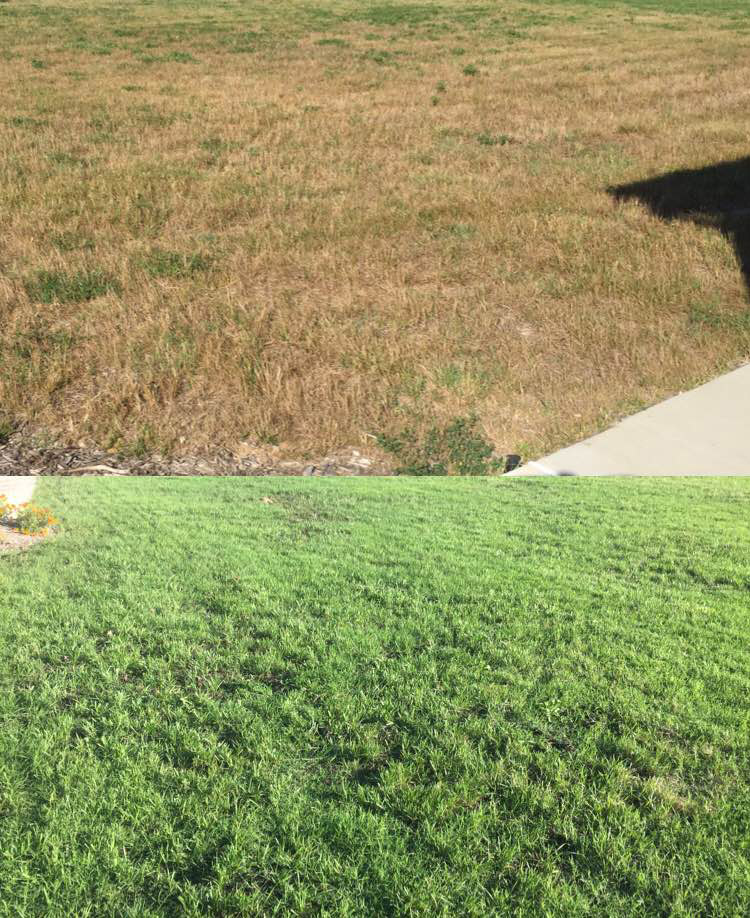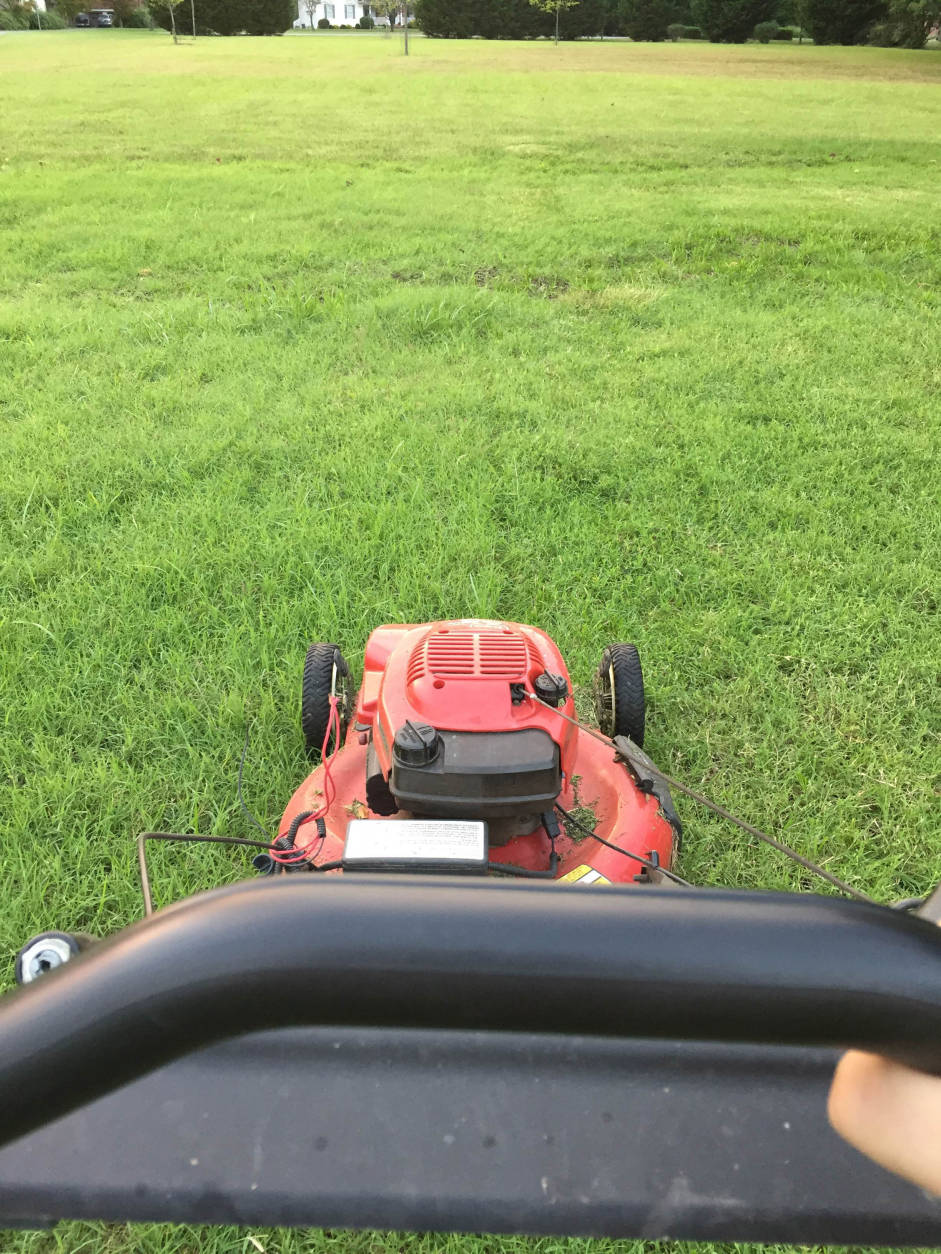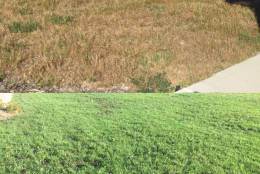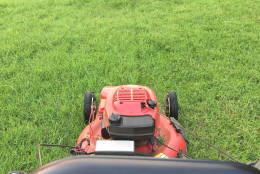



Mulching leaves into a new lawn
Connor in Fairfax writes: “I’d like to get your opinion on mulching leaves back into the lawn after overseeding. The seed went in about four weeks ago. The yard was mainly weeds, so I had the soil tested, fixed any deficiencies, mowed everything down to two inches, double-aerated and heavily overseeded. I got really good results — almost like a carpet. Now my leaves are falling and I’ve heard conflicting views on what to do with them. Would mulching them back into the lawn smother the newly germinated grass while it’s trying to establish?”
It is a delicate balance, Connor. Dealing with fall leaves can be the trickiest part of establishing a new cool-season lawn, as the leaves tend to start falling while the new grass is still very young.
Whatever you do, don’t rake them; raking would tear up the new grass.
I’m going to recommend getting the bulk of the leaves off the lawn with a leaf blower; or even better, a leaf blower set on reverse that will vacuum up and shred those leaves. Don’t worry if there are a few leaves left on the lawn when you eventually have to mow it — they won’t do any harm.
Next year, you can begin to mulch more leaves back in, which is a great thing to do for established turf.
Should you drag leaves onto a new lawn?
John in Millersville followed our advice to de-thatch and spread compost on his lawn before overseeding and writes: “It looks fantastic!” (It sure does! Check out his ‘before and after’ pictures!)
“I have one compost-related question,” he continues. “I’ve lined up a neighbor to dump his leaves off at my yard. Isn’t there great value in me just mowing all the leaves into my lawn? Or would the absolute best bang for the buck be for me to do compost bins?”
In future years, mowing about an inch’s worth of leaves back into the lawn every fall would be a great idea, but especially with the compost you recently spread, the lawn just doesn’t need it this year. And as we just said above, you want to treat that young grass differently from an established lawn.
Organic matter a sure cure for sandy soil
John in Millersville concludes his ‘mulch or compost making’ leaf question with the words, “My goal is to just add some organic material to the sandy soil.”
That’s not “just,” John — adding organic matter is one of the absolute best ways to have a healthy lawn. If no leaves naturally fall on your lawn, absolutely dump about an inch’s worth on top and mow them into the turf in future seasons.
But use most of the leaves to make compost. Run them over with a bagging mower, pour them into a pile or a bin, and those shredded leaves will be fully composted by the time your lawn is ready for its fall feeding.
Feeding a lawn with compost is the best cure for sandy soil.
How to move a not-yet-mighty oak
Jay, “west of Manassas,” writes: “I have two six-foot-tall ‘volunteer’ oak trees that have been growing in my yard for about three years. I don’t want to cut them down, but I do need to relocate them to somewhere else in my yard. When should I do this? Now, or in the spring? And what’s the proper procedure?”
You can do the work a little later this fall, in midwinter or in the spring, Jay — pretty much any time except summer.
- Wait until the trees drop all their leaves and go fully dormant.
- Then, get some helpers and use sturdy, sharp shovels to start digging as far away from the trunk as the furthest branch reaches out, and down deeper than you think you should have to.
- When you unearth what should be a solid island of soil, place it on a tarp, lift it up and carry the tree to its new spot on the tarp. Do not drag it over.
- For the new planting, dig a wide hole, but not a deep one — you want the root flare to be visible above the soil line.
- Refill the hole with the same soil you took out; do not add any amendments to the planting hole.
- Let a hose drip slowly at the base of the tree for several hours afterward.
- Repeat this watering any week we don’t get rain for the next few weeks and again in the spring and especially next summer.
- If you must mulch, use only compost or arborist wood chips (not that awful dyed junk). Don’t mulch the actual tree; start six inches away from the trunk and then spread the mulch one inch deep as far out as the roots go.







